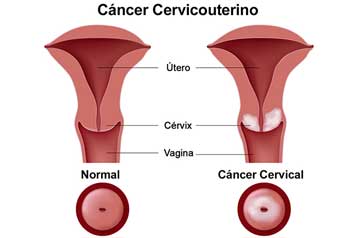Tuberculosis Screening for International Adoptees
What is TB?
Tuberculosis (TB) is a disease caused by germs that are spread from person to person through the air. TB usually affects the lungs, but it can also affect other parts of the body, such as the brain, the kidneys, or the spine. People with TB can die if they do not get treatment.
How is TB spread?
TB germs get into the air when a person with TB disease in the lungs or throat coughs, sneezes, speaks, or sings. These germs can stay in the air for several hours, depending on the environment. People who breathe in the air containing these TB germs can become infected.
Can children spread TB to others?
Children can spread TB to others, though the chance of that happening is much less likely than it is for adults who have TB. There have been several cases in which a child was found to be infectious and spread TB to others. These cases highlight the need to use caution when assuming that children with TB cannot spread the disease.
In order to protect the health of the U.S. public, CDC has developed Technical Instructions for TB screening and treatment. The Technical Instructions are requirements for physicians on how to conduct medical exams for immigrants and refugees. The TB Technical Instructions are screening requirements that are designed to reduce the spread of TB disease in adults and children. Thus, the Technical Instructions are applied to all age groups. Because CDC’s primary duty is to protect the health of the U.S. public, CDC revised the TB Technical Instructions in 2007 to ensure that more TB cases are found and reduce the chance that adults and children can spread the disease.
How serious is TB?
TB is among the top 10 causes of death in the world. Although, the number of TB cases is still declining in the United States, the speed of decline has slowed since 2000. Multidrug-resistant TB (MDR TB) caused by TB germs resistant to the best first-line drugs (isoniazid and rifampin) used for TB treatment remains a concern. This type of TB is both difficult and expensive to treat. Extensively drug-resistant TB (XDR TB) is caused by TB germs resistant to the most effective first- and second-line drugs used to treat TB. Thus, it is much more difficult to treat than MDR TB. Although XDR TB is very rare in the United States, it is much more common in certain parts of the world and the number of cases appears to be rising worldwide.
What are the tuberculosis (TB) Technical Instructions?
The U.S. Department of Health and Human Services (HHS) requires that all immigrants and refugees coming to the United States be screened for tuberculosis (TB). CDC’s Division of Global Migration and Quarantine (DGMQ) develops the TB Technical Instructions, which are guidelines for physicians who conduct these screenings. These screening requirements, known as the TB Technical Instructions, focus on testing and treating immigrants and refugees.
Do the requirements of the TB Technical Instructions apply to children from other countries who are being adopted by U.S. citizens?
Yes. The TB Technical Instructions require medical screening for all immigrants, including children. Immigration law states that children from other countries who are being adopted by U.S. citizens are applying for U.S. entry as immigrants. Therefore, these children must undergo medical examination, according to CDC’s TB Technical Instructions. This includes the required immigrant TB screening.
Why are there different sets of TB Technical Instructions?
The original TB Technical Instructions, developed in 1991, were based on the best screening tests and treatment known at that time. The TB Technical Instructions were updated in 2007 to use newer, more precise tests to reduce the chance of bringing TB into the United States and improve the health of immigrants and refugees through earlier diagnosis and updated methods of treatment.
What are the key revisions to the TB Technical Instructions?
CDC updated the TB Technical Instructions in 2007 to make testing more precise and treatment more effective. The new Technical Instructions require that:
- Cultures must be taken for immigrant applicants thought to have TB; results of these cultures can take 6-8 weeks.
- Drug susceptibility testing must be conducted on positive TB cultures to see which drugs are effective against the type of TB found.
- Directly Observed Therapy (DOT) must be used to treat the TB and this treatment must be given before children come to the United States. DOT means that medical staff must observe patients in person as they swallow each dose of TB drug.
How do the 2007 TB Technical Instructions affect the TB evaluation in children?
To help detect TB in children, the 2007 TB Technical Instructions require that children aged 2 through 14 years undergo a TB skin test if they are medically screened in countries where the TB rate is 20 cases or more per 100,000 population.
If the skin test is positive, a chest X-ray is required. If the chest X-ray suggests the child has TB, three sputum specimens must be taken so that smear and culture tests can be conducted. For a sputum smear, a small amount of mucus collected from deep in the lungs is smeared on a slide and viewed under a microscope to look for TB germs. A culture involves putting a sputum sample in a petri dish to see if TB germs grow. This generally takes 6-8 weeks.
How does the waiver process work? Does CDC have the authority to allow adoptive children with tuberculosis (TB) to receive a waiver and enter the U.S.?
If a person has a disease that prevents them from legally entering the United States, that person can apply for a waiver. All immigrants (including adopted children) are given the same consideration. The waiver application goes to the Department of Homeland Security. If the waiver is approved, the person is allowed to come to the United States.
CDC reviews medical records and provides a recommendation to the Department of Homeland Security during the waiver process. However, only the Department of Homeland Security has the authority to approve or deny a waiver. CDC does not have the authority to make this decision.
For more information about the waiver process, please see the U.S. Department of Homeland Security website: DHS Waiver Information ![]()
If adopted children are guaranteed to receive medical care in the U.S. upon arrival, why can’t they receive care and treatment for tuberculosis in the U.S.?
Any immigrant or refugee who has TB is not allowed to enter the United States until the disease has been treated correctly. CDC’s primary goal is to reduce the spread of disease in the United States, and research has shown that TB can be transmitted to others through actions as simple as coughing, sneezing, speaking, or singing. Although medical care may be accessed when a child arrives in the United States, this does not reduce the possibility that TB may be transmitted to others during travel or before treatment is completed in the United States.
Why does CDC only recognize certain hospitals or doctors for screening and treatment of TB overseas?
Medical examinations for immigrant and refugees are performed by over 400 physicians who have been selected by U.S. Department of State consular officials. These doctors, known as panel physicians, are specifically trained to follow the Technical Instructions for medical examination that are written by CDC.
Before applying revised Technical Instructions in new countries, CDC goes through a long process to ensure that a country is prepared to follow these instructions. Panel physicians are educated about new standards for testing and treatment. In addition, CDC visits labs in each country to make sure that any new tests can be performed properly. Because different countries have different medical systems, resources, and medical practices, it is important to ensure that the Technical Instructions are carried out correctly. Generally, the process of implementing new Technical Instructions takes several months and includes many visits to each country involved. Both panel physicians and labs are evaluated by CDC staff on an ongoing basis.
This detailed process is designed to protect the public’s health. Therefore, CDC does not accept medical tests or records from physicians or labs other than those specifically recognized through these processes. This allows CDC to ensure quality control and that medical examinations are accurate and valid.
For more information on the TB Technical Instructions and how the apply to adoptees, please contact the Centers for Disease Control and Prevention (CDC) at 800-CDC-INFO (800-232-4636) TTY: (888) 232-6348 24 Hours/Every Day or via email at cdcinfo@cdc.gov
- Page last reviewed: March 29, 2012
- Page last updated: March 18, 2010
- Content source: Centers for Disease Control and Prevention
National Center for Emerging and Zoonotic Infectious Diseases (NCEZID)
Division of Global Migration and Quarantine (DGMQ)
Source
Tuberculosis Screening for International Adoptees Frequently Asked Questions (FAQs)
Centers for Disease Control and Prevention
GeoSalud, March 29, 2013






